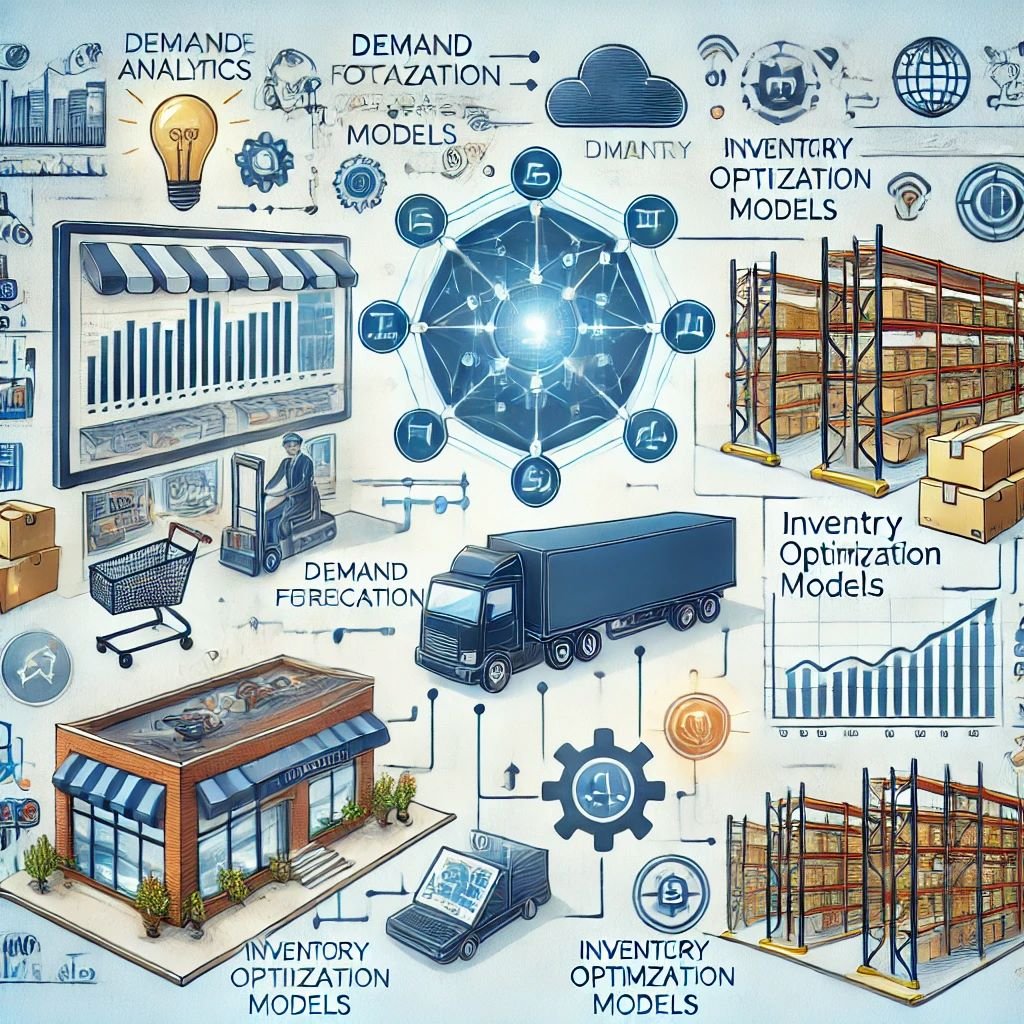
Comprehensive Report on Predictive Analytics in Retail
Predictive analytics leverages statistical techniques, data mining, and machine learning to forecast future events based on historical data.
In the retail context, predictive analytics is crucial for anticipating customer demand and optimizing inventory levels.
This report delves into forecasting demand and inventory optimization models, highlighting their applications, benefits, methodologies, and challenges.
Forecasting Demand
Importance of Demand Forecasting
Demand forecasting predicts future customer demand using historical sales data, market trends, and other relevant information.
Accurate demand forecasting is critical for:
- Reducing Stockouts: Ensuring products are available when customers need them.
- Minimizing Overstocks: Avoiding excess inventory that ties up capital and increases holding costs.
- Optimizing Supply Chain: Streamlining operations from procurement to sales.
- Enhancing Customer Satisfaction: Meeting customer expectations by maintaining optimal stock levels.
Methods of Demand Forecasting
-
Qualitative Methods:
- Expert Judgment: Insights from experienced professionals.
- Delphi Method: Consensus forecasting through multiple rounds of expert opinions.
- Market Research: Surveys, focus groups, and interviews.
-
Quantitative Methods:
- Time Series Analysis:
- Moving Averages: Smoothing out short-term fluctuations.
- Exponential Smoothing: Weighing recent observations more heavily.
- ARIMA (AutoRegressive Integrated Moving Average): Modeling complex time series data.
- Causal Models:
- Regression Analysis: Identifying relationships between demand and influencing factors (e.g., price, marketing spend).
- Econometric Models: Incorporating economic indicators to predict demand.
- Machine Learning Models:
- Random Forests: Ensemble learning method for classification and regression.
- Neural Networks: Deep learning models capturing non-linear relationships.
- Support Vector Machines: Effective in high-dimensional spaces.
- Time Series Analysis:
Applications in Retail
- Seasonal Demand Forecasting: Anticipating demand spikes during holidays and special events.
- New Product Forecasting: Estimating demand for new product launches.
- Promotional Forecasting: Predicting the impact of marketing campaigns on sales.
Inventory Optimization Models
Importance of Inventory Optimization
Inventory optimization ensures that the right products are available at the right time and in the right quantities, balancing the costs of holding inventory with the need to meet customer demand.
Effective inventory management is crucial for:
- Cost Reduction: Minimizing holding and obsolescence costs.
- Service Level Improvement: Ensuring product availability and reducing lead times.
- Revenue Enhancement: Avoiding lost sales due to stockouts.
Methods of Inventory Optimization
-
Deterministic Models:
- Economic Order Quantity (EOQ): Calculating the optimal order size to minimize total inventory costs.
- Reorder Point (ROP): Determining when to reorder stock based on lead times and demand rates.
-
Stochastic Models:
- Safety Stock Calculation: Accounting for demand variability and lead time uncertainty.
- Service Level Optimization: Balancing stock levels with desired service levels.
-
Multi-Echelon Inventory Optimization:
- Centralized vs. Decentralized Inventory: Managing stock across multiple locations and supply chain stages.
- Network Optimization: Aligning inventory levels with supply chain network design.
-
Advanced Techniques:
- Dynamic Inventory Models: Adjusting inventory policies in real-time based on demand fluctuations.
- Vendor-Managed Inventory (VMI): Suppliers managing inventory levels on behalf of retailers.
- Just-in-Time (JIT): Minimizing inventory by receiving goods only as they are needed.
Applications in Retail
- Perishable Goods Management: Optimizing stock levels for products with limited shelf life.
- Slow-Moving Inventory: Strategies for managing products with low turnover rates.
- Omnichannel Retailing: Integrating inventory management across online and offline channels.
Integration of Demand Forecasting and Inventory Optimization
Collaborative Planning, Forecasting, and Replenishment (CPFR)
CPFR is a business practice that combines the intelligence of multiple trading partners in the planning and fulfillment of customer demand. Key components include:
- Collaborative Planning: Joint business plans and sales forecasts.
- Collaborative Forecasting: Sharing demand forecasts and aligning strategies.
- Collaborative Replenishment: Coordinating order placement and inventory management.
Data Integration and Analytics Platforms
Modern retail environments utilize integrated data platforms to collect, analyze, and act on data from various sources:
- ERP Systems: Enterprise Resource Planning systems for integrated business processes.
- Advanced Analytics Tools: Software solutions for predictive modeling and optimization (e.g., SAS, SAP, Oracle).
- Big Data Analytics: Leveraging large datasets and real-time data processing.
Challenges and Future Trends
Challenges
- Data Quality: Ensuring accurate, complete, and timely data.
- Complexity of Models: Managing sophisticated models and ensuring they align with business needs.
- Change Management: Adapting organizational processes to leverage predictive analytics.
Future Trends
- AI and Machine Learning: Enhanced models for more accurate predictions and optimization.
- IoT and Real-Time Data: Utilizing Internet of Things (IoT) devices for real-time inventory tracking.
- Blockchain Technology: Ensuring transparency and traceability in the supply chain.
- Sustainability Initiatives: Integrating environmental considerations into inventory practices.
Predictive analytics, encompassing demand forecasting and inventory optimization, is vital for modern retail operations.
By leveraging advanced methodologies and technologies, retailers can enhance their decision-making processes, improve customer satisfaction, and drive operational efficiencies.
However, successful implementation requires overcoming data quality issues, managing model complexities, and adapting organizational processes.
As technology evolves, the integration of AI, IoT, and blockchain will further transform predictive analytics in retail, paving the way for more innovative and sustainable practices.
Back to How to Use Data Analytics Main Page


